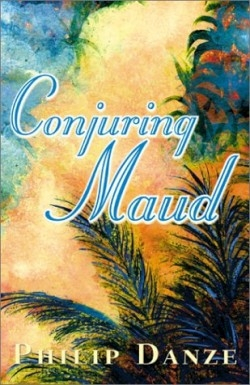Conjuring Maud
Readers who want adventure, romance, and lyrical story-telling will find it all in this novel. Beginning with the memories evoked by a small volume of Marcus Aurelius’ Meditations found in a jacket that hadn’t been worn in forty years, and ending with dinner in London with an African tribal king, Conjuring Maud is like discovering a dusty, but precious, gemstone in a box of old letters, and having a spellbinding narrator relate its story. This tale spans many years, as the narrator is an old man remembering. “When I thumbed through musty, silky pages and read the inscription inside the cover…my boyhood days in South Africa slowly rolled back on me.”
The story is set in Africa during the early twentieth century, and the narrator engages the reader in old-fashioned story-telling reminiscent of H. Rider Haggard’s African adventure novel King Solomon’s Mines. David Unger, a seventeen-year-old British schoolboy, tells of his lifelong love for the adventurous Maud King, sixteen years his senior.
Much of the story unfolds during the time of the Boer wars, the early activist years of Gandhi, and a Zulu uprising. The British Empire is losing its grip on West Africa, and the Union Jack is called “the butcher’s bloody apron.” As David grows from teen to adult, his life is always defined by his love for Maud: he travels in Africa to deliver her mail, helps her gather specimens of plant and animal life, and works in her clinic. He returns to Africa as a man to find Maud one last time. By then he has almost completed medical school and brings medicines to her clinic, intent upon staying with her this time.
During his travels, David encounters the beauty and sadness of Africa. “West Africa was a strange land of sublime beauty, of violence and sorcery, of amber, gold…of scarred faces and beaded bodies.” The author is a master at evoking the senses to describe the country, the jungle, the heat and bugs—and he does it with an amazing economy of words. Those he uses are precise and evocative: “Darkening masses of mahogany trees were shrouded in a profusion of vines rising from a misty forest floor…kevazingo trees…leaped out from the shadows of the ebonies in their midst.”
Reviewed by
Ronald L. Donaghe
Disclosure: This article is not an endorsement, but a review. The publisher of this book provided free copies of the book to have their book reviewed by a professional reviewer. No fee was paid by the publisher for this review. Foreword Reviews only recommends books that we love. Foreword Magazine, Inc. is disclosing this in accordance with the Federal Trade Commission’s 16 CFR, Part 255.

